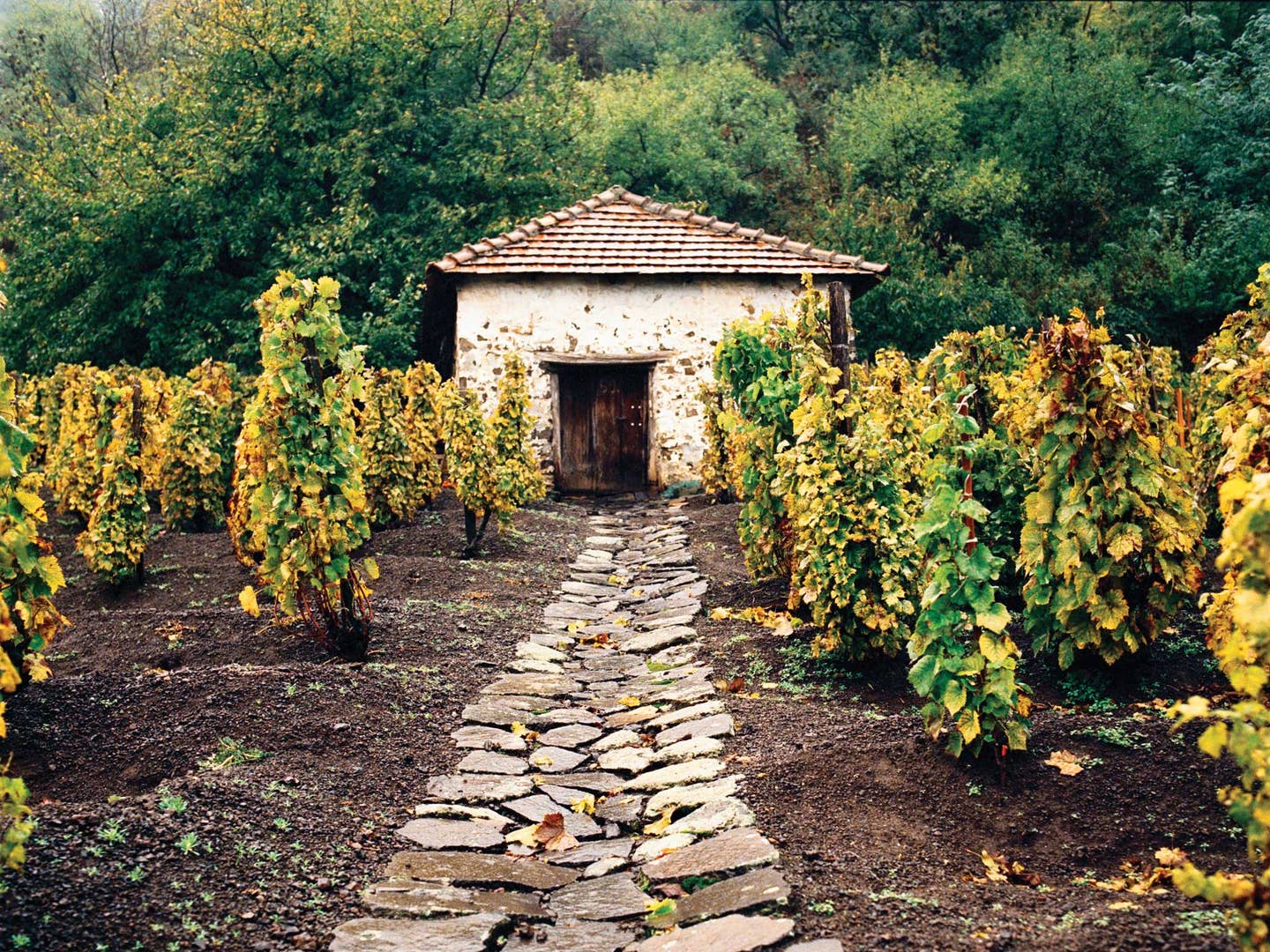
Hungary’s Forgotten Wine Region is Finally Getting the Respect it Deserves
Follow Adam Leith Gollner to the Zemplén mountains, which the locals call “the forgotten hat of God”
There are 27 villages in the foothills of Tokaj—all of them buried in fog.
Everything is gray-white gauze: the timeless raisins on their vines, the medieval castles, the volcanic Zemplén Mountains themselves. The hazy Turkish-bath vibe is a result of airborne moisture from the Bodrog and the Tisza rivers—but there's a primordial, ancient-in-every-way quality to life here on the far side of the Danube, where feeling stuck in the mists of time is a daily occurrence.
Getting around by car can be difficult, which is why you still see horses and buggies navigating these backcountry roads. Fortunately, Judit Bodó, the 38-year-old winemaker at Bott Pince winery, has come to pick me up at my inn.
“It'll be better this way,” she counsels, knowing that I'd get lost in the impenetrable brume thickets trying to find the cellar. As we drive along the main road in the village of Tokaj (pronounced TOKE-eye), located in the center of this region in northern Hungary, Bodó slows down to avoid some ghostly figures that appear in the gloom. It's a group of kids doing BMX tricks in the middle of the street. They wave at Bodó through the condensation.
"There's the banda," she says, using the Hungarian word for a band of friends. "They're always here, riding around in the traffic. It's dangerous, so I'm going to hold an auction where we winemakers will sell old bottles of wine for a lot of money and donate the proceeds to build a bike park."
The kids are wearing headbands and punk rock T-shirts and skateboard shoes and they make me think of the teenaged banda I belonged to when my family lived in Budapest in the early 1990s. My friends and I would spend all our time hanging out in the local schoolyard, playing soccer, making out, listening to the Ramones on boom boxes, and—because there was no enforced legal drinking age in Hungary then—getting wasted on Hungarian furmint, the name for a local grape variety and one of Hungary's most distinctive white wines.
At that time, my father grew grapes on the slopes of Mount Szent-György overlooking Lake Balaton, an hour and a half southwest of Budapest. Each year, the szüret, or grape harvest, was an occasion for family and friends to get together, drink first-run juice, and eat paprika-laced beef stew cooked in a cauldron over an open fire. We would pick the fruit by hand, filling our baskets with gray-green bounty, and then toss it all into a Kremlin-era grape crusher. My dad's wine, a thin white olasz riesling, wasn't sold commercially. Other than sweet Tokaji—the name for the wines from the region—and a few other mass-market bottlings (Bull's Blood of Eger, anyone?), it seemed inconceivable that Hungarian wines would ever find an international market. It was a shame, as their minerally dry whites deserved a wider audience than us bored teenagers.
Somló Wine Shop; Somló, Hungary
Most people who work on Somló’s mountain don’t live there, but merely come for the day. On the terrace of the Somló Wine Shop, a tight-knit band of “true” Somló residents and winemakers frequently gathers to dine and drink.
Things have come a long way since then. Having dinner not long ago at Roberta's, that haute-hipster pizzeria in Brooklyn, I noticed something astonishing: There were not one, but five Hungarian wines on its wine list, including a few of those volcanic whites. The sommelier suggested I try Béla Fekete's white juhfark, from Somló. It was incredible: smoky and rich, yet full of a profound minerality, like an aged santorini, or a premier cru chablis, but with a taste bud-singeing Central European spiciness all its own.
Whether Hungary will ever again regain the stature it enjoyed from the 17th century to the 19th century—when it produced the best-regarded and most expensive wines in Europe—remains to be seen. What's clear, as I learned when I visited the country's two esteemed wine-producing regions, Somló (located 30 miles north of my father's vineyard) and Tokaj (about three hours from Budapest in the polar opposite direction), is that the quality of Hungarian dry white wines—scintillatingly mineral, brightly textured, of an otherworldly complexity—has never been higher. Word isn't fully out about these volcanic wines yet, which means they are still available at a discount. Many talented young growers are learning from legends like Fekete how best to capture their regions' singular attributes, which bodes well for the future.
The label on the back of Fekete's juhfark, the one that spurred this Hungarian adventure, recommends that his wine be "ideally enjoyed with wild fowl by candlelight."
“Wild pheasant works especially well with our wines,” affirms Fekete, when I meet him at his modest home on the outskirts of Veszprém in Somló. “And candles? Well, they just make everything seem more romantic.” He speaks about romance and wild game with the kind of authority that only an 89-year-old winemaker known as “The Grand Old Man of Somló” who often rocks thick-lensed, government-issued, Run DMC-style Eastern bloc glasses can command.
Fekete makes several different wines, all white, all grown on the volcanic hill of Somló, and all of which have an affinity for game birds and candelabras. They also match splendidly with pretzel sticks, as I learn when Fekete's wife, Bori, puts some out for us to snack on.
“The truth is, dry white Somló wine is good with everything,” she notes, pouring us another glass of their golden wine. “Wild meats, especially, but anything savory, really. Try it with different things—you'll see.”
Somló was formed millions of years ago from the lava-encrusted remains of a volcanic eruption. Whereas the Tokaj region consists of a number of volcanic mountains, the hill of Somló rises unexpectedly out of the flat surrounding plains like an immense pith helmet (hence its local name: “The Forgotten Hat of God”). The wines grown on these igneous slopes are renowned for taking on the soil's smoky characteristics and are traditionally described as “fiery”—filled with a magma-like intensity.
On the evening I arrive in Somló, I attend a party in the vines on the hillside where a large black cauldron hangs over burning logs, just as I remembered from my childhood. It is filled with that same comforting meat stew. With the scent of paprika in the air, a group of thirty-something winemakers has gathered to share their wines with one another. These are exclusively white wines—some more polished than others, some more light-bodied or fruit-forward, but all sharing that mineral flavor.
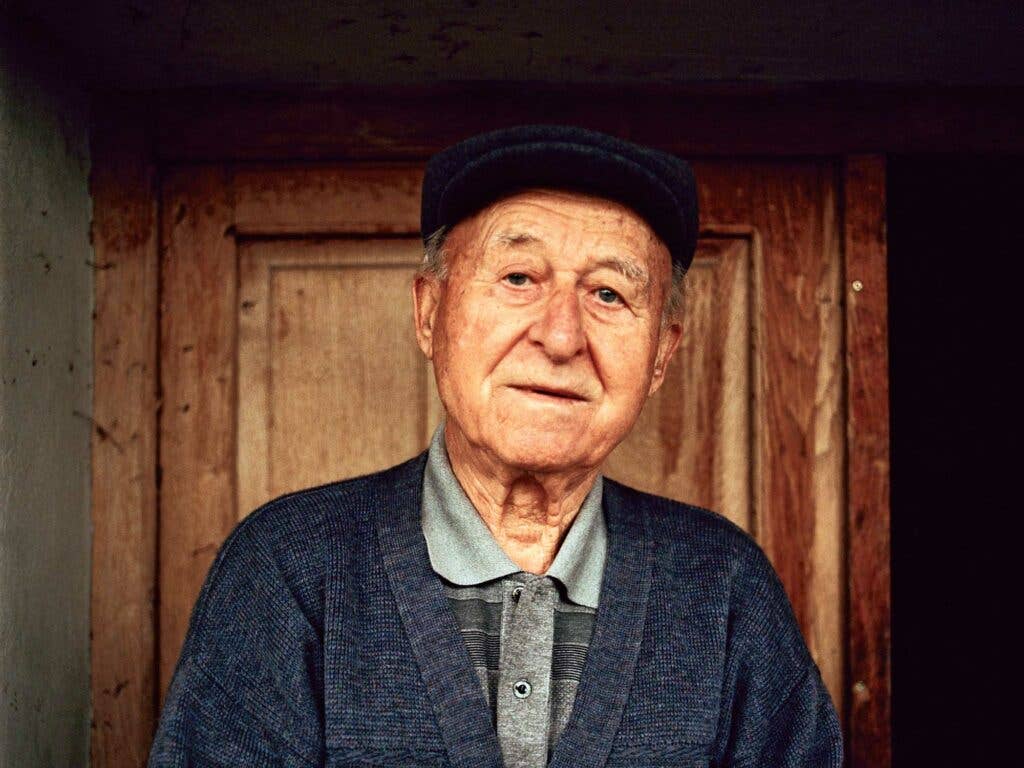
When the winemakers at the gathering find out I'm here to learn more about the terroir, I'm whisked to the Somló Wine Shop, a cellar that serves as a tasting room and bar.
We sample a sensational range of wines there, primarily made with three indigenous grapes: hárslevelü, the most floral; the furmint grape, which lends a particularly concentrated taste to its wine because of trace deposits of volcanic debris in the soil; and the cépage that lured me here, juhfark. Meaning "ewe's tail," it is almost exclusively grown on Somló's hillsides. According to lore, juhfark is meant to be consumed by a couple on their wedding night in hopes of conceiving a male child. That reputation may also have something to do with the way juhfark's ethereal perfume and deep minerality distract newlyweds from realizing how strong the wine actually is, which gets them inebriated and copulatory in no time at all. Candlelight is recommended.
Hungarian Braised Beef with Paprika (Pörkölt)
Over cauldron’s of a hearty beef and paprika stew, winemakers in Somló often gather to dine al fresco. Get the recipe for Hungarian Braised Beef with Paprika (Pörkölt)
Tasting Notes: Hungarian White Wines
| Varietal or Wine Name | Producer | Appellation | The Details | Buy It |
|---|---|---|---|---|
| Juhfark | Fekete | Somló | All of Fekete's white Somló wines have the strange ability to stab your tongue with microbursts of incredibly rich acidity—that effect is the essence of Somló, and nobody does it better than Fekete. His juhfark in particular is one of the most crystalline wines in the world: Imagine a thousand lemony, smoky, honey-filled points of light cutting into all your tastebuds. Sheer, pure brilliance. | $22 at klwines.com |
| Csontos Furmint | Bott | Tokaj | Tokaji is a wine so hallowed that people prefer to respect it rather than drink it: It suffers from a reputation of being too special. People open it for marriages and baptisms, but they don't crack it open on the regular—unless they know about Bott's Csontos. Named after a cru that means “boney,” Csontos is so powerfully bone-dry as to be almost salty, yet simultaneously contains a beguiling silkiness. It pairs as well with foie gras and shellfish as it does with wiener schnitzel, roasted goat, and Sichuan food. The new Tokaji. | $25 at winehouse.com |
| Wedding Night Wine | Spiegelberg | Somló | Former BMW test driver István Spiegelberg makes precisely calibrated Somló whites, including this strangely named cuvée that harkens back to the ancient folk belief that drinking Somlói juhfark on one's wedding night (as the Habsburg emperors did) would lead to the birth of male children. Let's put it this way: It's a white wine filled with testosterone. | $40 at bluedanubewine.com |
| Furmint Estate | István Szepsy | Tokaj | About 10 years ago, the legendary István Szepsy realized “in an explosive way” that dry wines are what he is supposed to be making in Tokaj, where terroirs are best known for their sweet dessert elixirs. Any furmint by Szepsy showcases the region's extraordinary minerality. | $27 at thedrinkshop.com |
| Dry Szamorodni | Samuel Tinon | Tokaj | Samuel Tinon is, like the region of Tokaj itself, mainly known for his sweet wines, but he makes an extraordinary sous-voile, or intentionally oxidized, dry szamorodni that has to be tasted to be believed. Making szamorodni is an ancient tradition here, even though the wine may seem to have more in common with a vin jaune from the Jura or a sherry than it does with classic Tokaji. Tinon's take on this forgotten treasure is exquisite. | $46 at bluedanubewine.com |
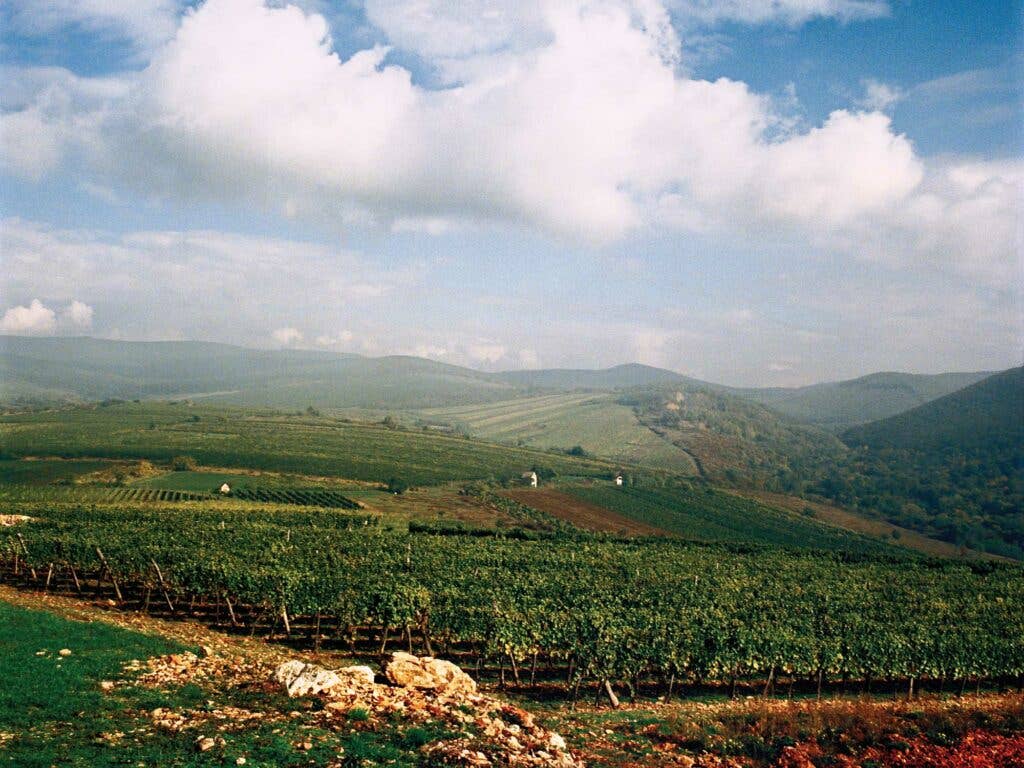
The wines of Imre Györgykovács are all about purity, elegance, and a beguiling saltiness. When I tasted them at the Wine Shop, they made me think of transparent horses galloping through rivers of molten lava. Lean and strong, with their musculature carried by vertebrae of volcanic stoniness. Above all, his wines are harmonious.
“In the past, Somló wines were drunk when they were well-aged,” Györgykovács says, when we meet for a tasting at his ancient cellar midway up the hill. “They were light wines—low in alcohol, high in acidity, and exceptionally long-lived.”
Did they taste anything like Somló's wines do today?
“It's hard to say what they tasted like, because the chain was broken,” he says, shaking his head. “During World War II, all the old stocks of local wine were drunk by Russian soldiers. And throughout the Communist era, people were forced to make industrial wines for the state. So nobody remembers what they used to be like.”
Györgykovács' father, carrying on his ancestors' winemaking tradition, had produced wine under the Communist regime, but his connection to the past had been unmoored by the 20th century's upheavals.
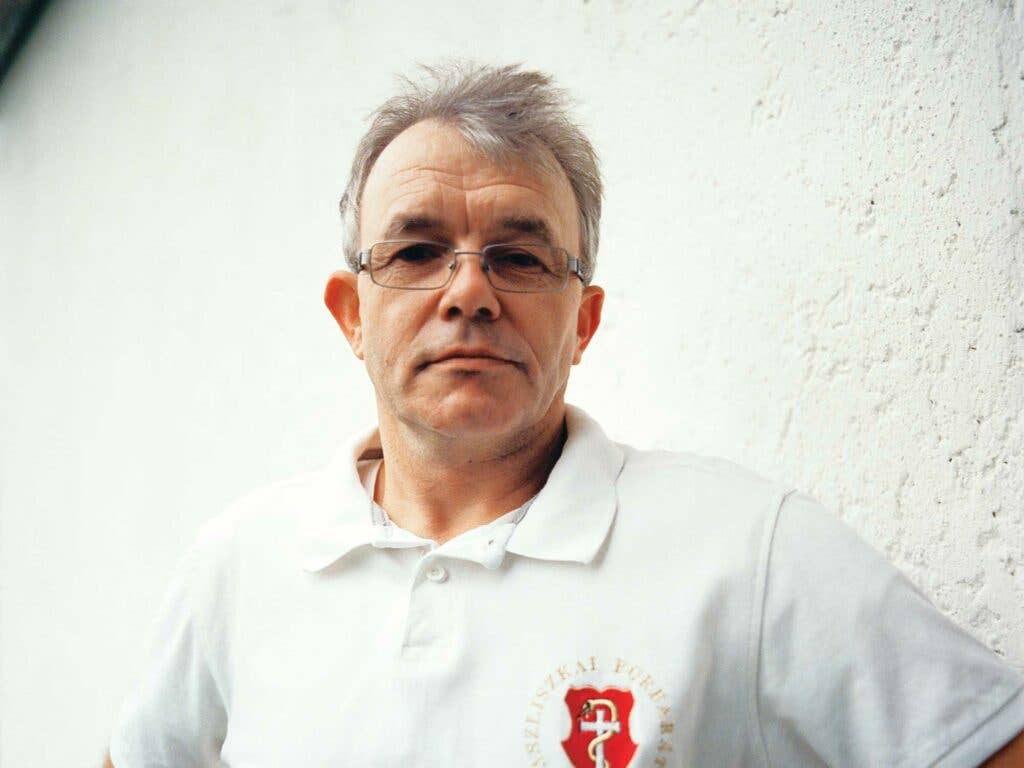
“My father was born in 1919 and became a soldier in 1941, so he was too young to have learned anything about winemaking,” he continues. “By the time he returned, it was the late 1940s, and everything had been destroyed. We're still trying to rediscover how things are supposed to be.”
Bodó, who rescued me from the fog on my first day in Hungary, echoes this sentiment in Tokaj, a half-day's drive away, where her winery is known for its dry whites.
“Here too, as in Somló, we don't really know what the wines are supposed to be like,” she tells me. “People used to know which varietals did best in which climats, but they erased that knowledge from people's minds under Communism. All the wines here belonged to the government monopoly, and all they cared about was quantity.”
Since the end of state rule in 1990, winemakers have been finding new ways to allow Tokaj's terroir to express itself. The soil here too consists of volcanic hillsides, although the region is of a much vaster size than Somló.
In Bodó's and other producers' eyes, making dry Tokaji has been a huge advance, so she views the region's historical challenges in a hopeful light. “I don't see the rupture of 1945 to 1990 as a tragedy,” she explains. “In fact, I find it exciting. We are essentially the first generation in Tokaj that has the opportunity to get quality levels back to where they're supposed to be. We're basically a new wine region with five hundred years of history behind us—how amazing is that?”
One of the most interesting names in the region is Samuel Tinon, a fifth-generation winemaker from Bordeaux who makes renowned sweet aszú wines, as well as fascinating dry szamorodni wines that have an oxidative, nutty edge more typically associated with Jura or Jerez. They've been made in Hungary for centuries.
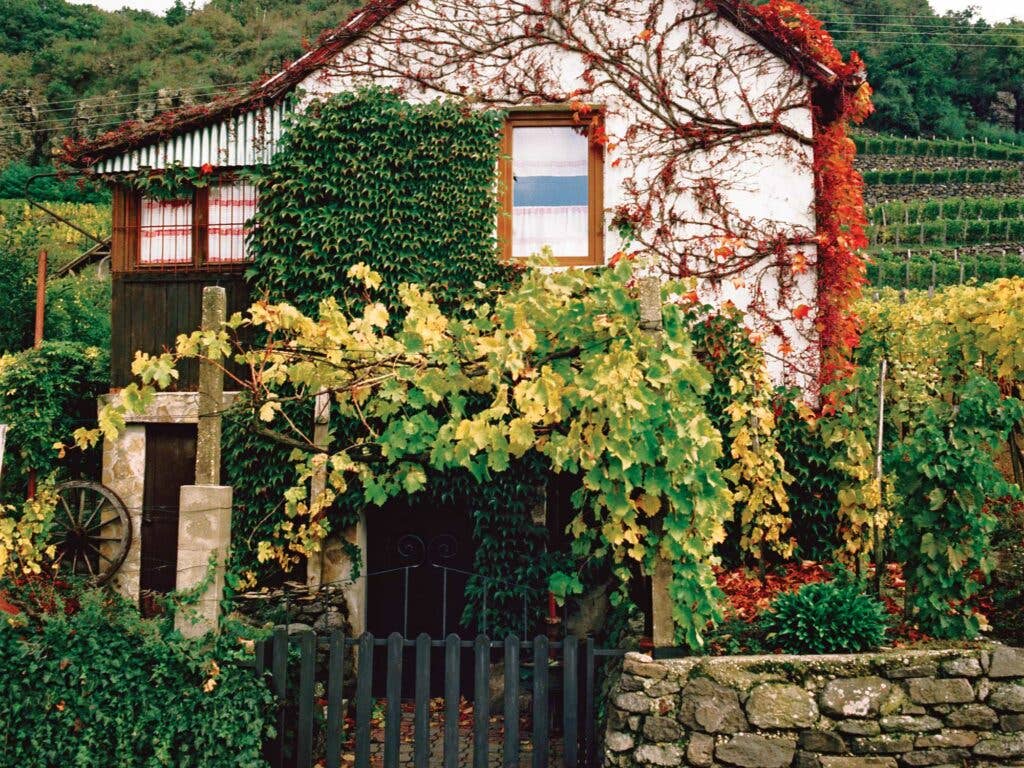
“I'm a specialist in sous-voile szamorodni,” Tinon tells me on the afternoon I visit his winery, mentioning the process of exposing the wine to air while it remains protected by a layer, or veil, of yeast cells, which gives the final product its distinctive flavor. “And I feel strongly that you cannot replace the sweet wines of Tokaj with dry wines. You need both. To only make dry wines would mean losing the key to this place. Dry wines could simply be a trend—and fashions come and go. The important thing is working in accordance with traditions.”
This notion of moving things forward by maintaining traditions was echoed by the last person I met with in Hungary, who also happens to be the country's most important winemaker: István Szepsy. In many ways, he is the strongest remaining connector between the Hungarian wine world of today and its all but severed past. Not only did he make wines for the state monopoly during the Communist era, but his ancestor Máté Szepsi Lacko (a priest in the early 1600s) was the first to set down in writing the method of making aszú wine using botrytised grapes.
Given this lineage, it's no surprise that Szepsy today makes magnificent aszú wines—but he also produces a range of extraordinary dry wines, as I learn at a tasting in his home. They taste like something chiseled from lava and marble, yet with a quartz-like crystalline purity.
Later that day, as we drive through the crus of Mád and Tállya, Szepsy shows me shriveled, botrytis-mold-encased raisins still hanging on the vines. These will be used to make his award-winning sweet wines. We get out of the car and, standing on a dormant volcano, Szepsy gestures over the fog-coated valley beneath us.
“This is where I believe it is possible to produce the most exceptional dry wines in the world,” he says. “It will take time to get there, of course. But we're on our way.”
Explore Somló and Tokaj
Kisfalucska Vendégház
First built in 1890, then renovated in 2000, this affordable, charming guest house sleeps eight.
Petöfi u. 16, Bodrogkeresztúr, Tokaj
Sallai Vendégház
Somló isn't much for tourism amenities at this point, so it's better as a day trip from Budapest, a couple hours' drive away. But if you want to overnight in Somló, this no-frills inn is run by the good people at the highly recommended Somló Wine Shop, and is a perfectly lovely place to rest your head after a day of imbibing local wines.
Eighth main road, Veszprém County, Somló
Where to Eat
Sárga Borház
The food and wine at this humble establishment are world-class. Located on the same property as the Disznókö winery, Sárga Borház offers classic countryside dishes like grilled goose liver, fried mushrooms, roasted duck legs, and a must-try take on cigánypecsenye, a garlicky Roma-inspired pork dish that positively sings when paired with dry furmint.
Mezözombor, 37, Tokaj
To schedule appointments for tours or sample the wines at these local wineries, it's best to make arrangements in advance.
Bott Pince Winery
3910 Tokaj, Szerelmi Pincesor 11, Tokaj
Fekete Winery
8481 Somlóvásárhely, Somló
István Szepsy
3909 Mád, Batthyány út 59, Tokaj
Samuel Tinon
3933 Olaszliszka, Bánom út 8, Tokaj
Somló Wine Shop
Somlóvásárhely, Somlóhegy, külterület hrsz., 1321, Somló
Keep Reading
Continue to Next Story










